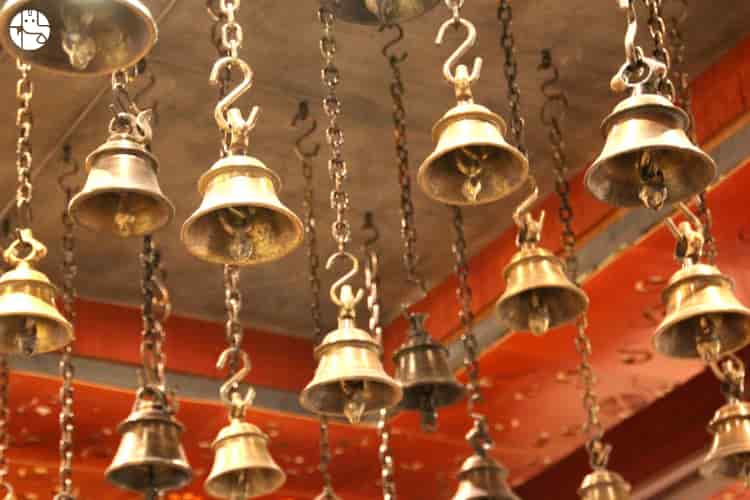Why Hindus Ring A Bell In Temples ?

In Hinduism, every ritual and tradition has a profound meaning. The objects used in puja rituals play a crucial role in promoting healing of body, mind and soul. One particularly important of puja is the ringing of bells. The bells symbolize auspiciousness and serve to invoke the divine presence of God and Goddess in the temple. in the temple. In Sanskrit, the bell is commonly called “ghant” or “ghanti”.
The significance of ringing the bell is elucidated in the ancient scriptures of Agama Shastra, stating: “Aagamaarthamtu devaanaam gamanaarthamtu rakshasaam Kurve ghantaaravam tatra devataahvaahna lakshanam”
Translated, this verse signifies : I ring this bell to invoke the presence of Gods and Goddesses, so that virtuous and noble forces enter (my house and heart), and the malevolent forces that reside within me depart.
The resonant sound of the bell produces the sacred vibration of OM: – ૐ, generating positive frequencies and vibrations throughout the surrounding space. Hanging bells in a temple serves not only spiritual, but also scientific purposes. Made with meticulous care, these temple bells incorporate a variety of metals and alloys, including cadmium, copper, zinc, nickel, lead, chromium and manganese. The precise proportions of these materials are determined by rigorous scientific calculations during the manufacturing process. So when the bell is rung, a harmonious balance is established between the left and right sides lobes of the brain, inducing a state of profound tranquility. When the bell is rung, it generates a distinct and enduring sound that echoes for a minimum of 7 seconds. The echos duration is sufficiently effective in stimulating all seven chakras of our body. This leads to the clearing of our minds from all thoughts, enabling us to enter a heightened state of concentration. This tradition extends beyond Hinduism; it is also embraced in other religions such as Buddhism, Jainism, and Christianity, where the custom of ringing bells is observed in both temples and churches.
